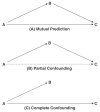Social and behavioral characteristics of young adult drink/drivers adjusted for level of alcohol use
- PMID: 17374045
- PMCID: PMC1989671
- DOI: 10.1111/j.1530-0277.2007.00350.x
Social and behavioral characteristics of young adult drink/drivers adjusted for level of alcohol use
Abstract
Background: Alcohol consumption and drink/driving are positively correlated and many predictors of alcohol use also predict drink/driving. Past research has not fully distinguished the contributions of personal risk factors from the level of alcohol use in the prediction of drink/driving. As a result, the extent to which predictors are specific to drink/driving, versus due to a mutual association to alcohol use, is unclear.
Methods: This study examined the unique and shared risk factors for drink/driving and alcohol use, and examined the attributable risk (AR) associated with predictors of drink/driving while adjusting for alcohol use. Study data were from a telephone survey of 3,480 Michigan-licensed young adults who were drinkers. Four groups of drink/drivers were formed based on the prior 12-month maximum severity of drink/driving: (1) never drink/driving; (2) driving at least once within an hour of 1 or 2 drinks; (3) driving within an hour of 3 or more drinks or while feeling the effects of alcohol; and (4) drinking while driving.
Results: Lower perceived risk of drink/driving, greater social support for drinking and drink/driving, greater aggression and delinquency, more cigarette smoking, and more risky driving behaviors uniquely predicted drink/driving severity in models adjusted for alcohol use. The largest ARs were associated with social support for drinking and drink/driving and perceived risk of drink/driving.
Conclusions: These results confirm that alcohol use and drink/driving share risk factors, but also indicate that part of the variation in these factors is specific to drink/driving. Implications for interventions to reduce drink/driving are discussed.
Figures
References
-
- American Association for Public Opinion Research . Standard definitions: final dispositions of case codes and outcome rates for surveys. 2000. [Accessed September 21, 2006]. Available at: http://www.aapor.org/default.asp?page=survey_methods/standards_and_best_....
-
- Babor TF, de la Fuente JR, Saunders J, Grant M. AUDIT: The Alcohol Use Disorders Identification Test. Guidelines for Use in Primary Health Care. World Health Organization; Geneva: 1992.
-
- Babor TF, Del Boca FK. Just the facts: enhancing measurements of alcohol consumption using self-report methods. In: Litten R, Allen J, editors. Measuring Alcohol Consumption. Humana Press; Totawa, NJ: 1992. pp. 3–20.
-
- Babor TF, Steinberg K, Anton R, Del Boca FK. Talk is cheap: measuring drinking outcomes in clinical trials. J Stud Alcohol. 2000;61:55–63. - PubMed
-
- Baum S. Drink driving as a social problem: comparing the attitudes and knowledge of drink driving offenders and the general community. Accid Anal Prev. 2000;32:689–694. - PubMed
MeSH terms
Grants and funding
LinkOut - more resources
Full Text Sources
Medical
Research Materials
Miscellaneous


